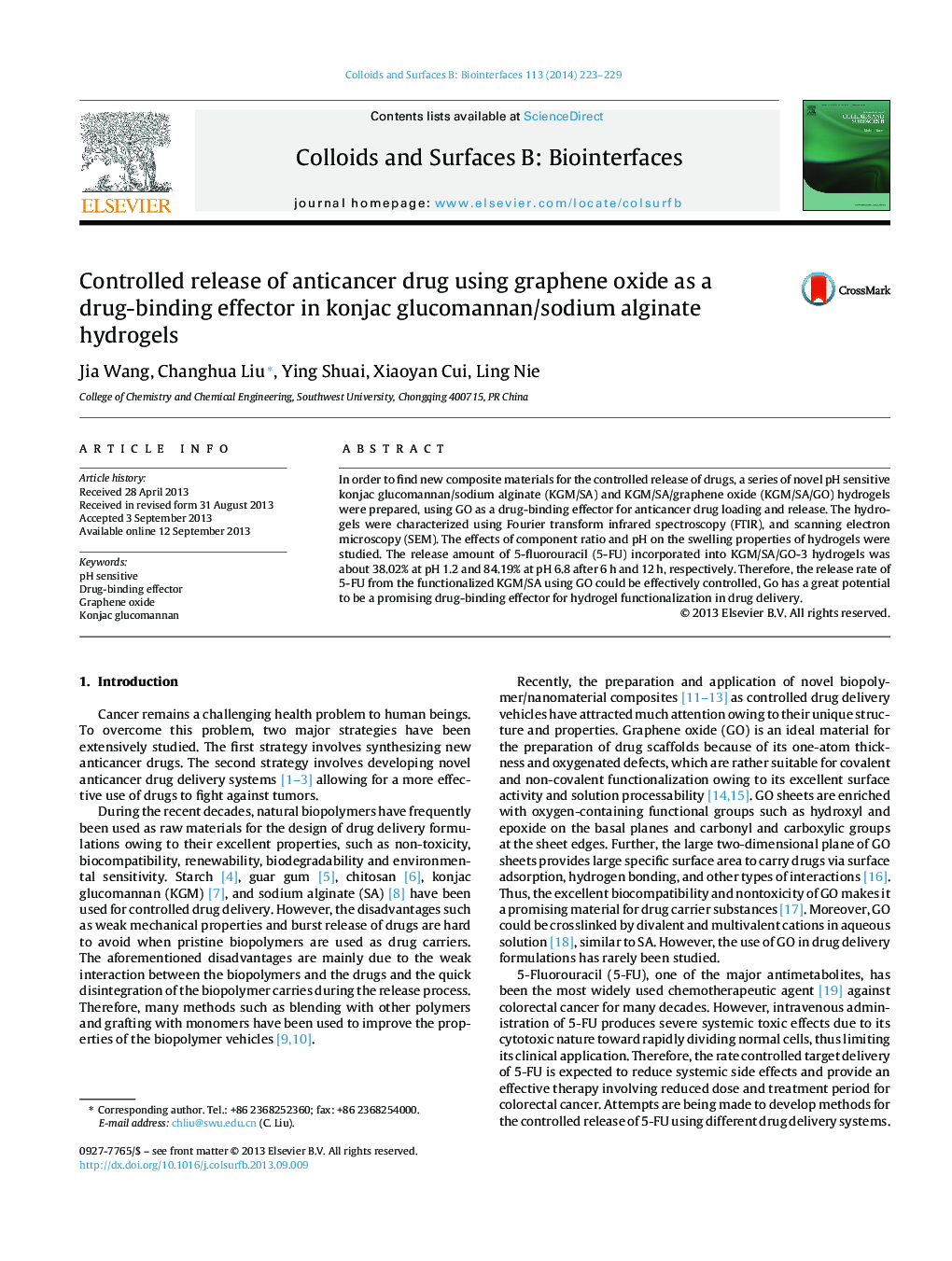| Article ID | Journal | Published Year | Pages | File Type |
|---|---|---|---|---|
| 599983 | Colloids and Surfaces B: Biointerfaces | 2014 | 7 Pages |
•We used graphene oxide as a drug-binding effector for cancer therapy drug loading and release.•The possible mechanism of the gelation of graphene oxide and polysaccharide was discussed.•Graphene oxide composite hydrogels showed excellent pH sensitive.•The KGM/SA/GO-3 hydrogels could control the drug release well.
In order to find new composite materials for the controlled release of drugs, a series of novel pH sensitive konjac glucomannan/sodium alginate (KGM/SA) and KGM/SA/graphene oxide (KGM/SA/GO) hydrogels were prepared, using GO as a drug-binding effector for anticancer drug loading and release. The hydrogels were characterized using Fourier transform infrared spectroscopy (FTIR), and scanning electron microscopy (SEM). The effects of component ratio and pH on the swelling properties of hydrogels were studied. The release amount of 5-fluorouracil (5-FU) incorporated into KGM/SA/GO-3 hydrogels was about 38.02% at pH 1.2 and 84.19% at pH 6.8 after 6 h and 12 h, respectively. Therefore, the release rate of 5-FU from the functionalized KGM/SA using GO could be effectively controlled, Go has a great potential to be a promising drug-binding effector for hydrogel functionalization in drug delivery.
Graphical abstractFigure optionsDownload full-size imageDownload as PowerPoint slide
